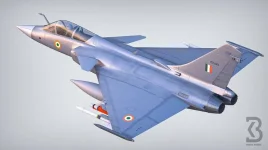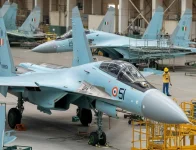- Views: 3K
- Replies: 18
As India pursues the ambitious goal of developing its own fifth-generation Advanced Medium Combat Aircraft (AMCA), a strategic analysis suggests that an alternative development path, inspired by South Korea's KF-21 Boramae program, could have streamlined the nation's air power modernization.
This approach could have potentially fulfilled the Indian Air Force's (IAF) immediate need for a 4.5-generation fighter, possibly negating the requirement for the costly Multi-Role Fighter Aircraft (MRFA) procurement.
At the heart of this strategy lies a different philosophy of development. Instead of aiming directly for a fifth-generation stealth platform, India could have first developed a 4.5-generation version of the AMCA.
This initial variant could have served as a powerful multi-role aircraft to fill pressing operational gaps, while simultaneously acting as a technological stepping stone towards the final, more advanced fifth-generation version.
This method offers a unified solution, addressing immediate military needs while building a cost-effective foundation for future aerial dominance.
The South Korean Model: A Phased Approach
South Korea’s KF-21 Boramae programme provides a compelling example of balancing current requirements with future ambitions.Developed by Korea Aerospace Industries (KAI) with international partners, the KF-21 is a state-of-the-art 4.5-generation fighter equipped with advanced avionics and weapon systems comparable to modern jets like the Rafale.
Crucially, the KF-21 was engineered with a modular design. This allows for planned, incremental upgrades over time, such as the future integration of internal weapons bays and advanced stealth coatings to evolve it into a true fifth-generation aircraft.
This phased development allowed South Korea to field a highly capable fighter jet relatively quickly, de-risking the complex technological leap to full stealth capabilities.
Bridging the Gap in the Indian Context
Applying this model to India, a 4.5-generation AMCA could have been prioritised as the initial goal. Such an aircraft could have been a twin-engine fighter integrating the already proven and mature systems from the indigenously developed Tejas Mk1A.This would include key components like the Uttam Active Electronically Scanned Array (AESA) radar, a locally produced electronic warfare suite, and a range of Indian-made weapons.
This aircraft, powered by a capable engine like the General Electric F414 (already selected for the upcoming Tejas Mk2 and the AMCA), would offer significant advantages in payload, range, and combat endurance.
By leveraging existing technologies from the Tejas ecosystem, the development timelines and associated costs could have been substantially reduced, building on the expertise already established at Hindustan Aeronautics Limited (HAL) and the Defence Research and Development Organisation (DRDO).
An Alternative to the MRFA Tender
The IAF’s plan to procure 114 foreign jets under the MRFA tender, with an estimated cost exceeding $15 billion, is driven by the urgent need to replace ageing fleets and maintain squadron strength.However, an indigenously produced 4.5-generation AMCA, as described above, could have presented a credible domestic alternative to foreign contenders like the F/A-18 Super Hornet or Rafale.
This domestic path would have offered immense strategic and economic benefits. The substantial funds saved from avoiding a massive import deal could have been reinvested to accelerate the AMCA project, expand production infrastructure at HAL, and support India’s growing private defence industry under the Atmanirbhar Bharat (self-reliant India) initiative.
Furthermore, relying on a domestic platform ensures complete control over its maintenance, upgrades, and supply chain, a critical factor for strategic autonomy.
Challenges and a Path Forward
Adopting such a strategy would not have been without its challenges.India's defence research and development projects have historically faced significant delays due to bureaucratic hurdles and funding inconsistencies, with the multi-decade journey of the Tejas aircraft serving as a prime example.
The IAF's immediate operational readiness requirements likely favoured procuring proven, off-the-shelf foreign aircraft over waiting for a new domestic platform to mature.
In March 2024, the Cabinet Committee on Security (CCS) officially sanctioned the full-scale development of the fifth-generation AMCA, setting a clear path forward.
While the decision has been made, the principles of the Korean model remain relevant. By focusing on a modular and scalable design, India can ensure that even as it pursues a full-fledged stealth fighter, it builds a robust technological and industrial base that can adapt to the evolving needs of the nation's defence.



